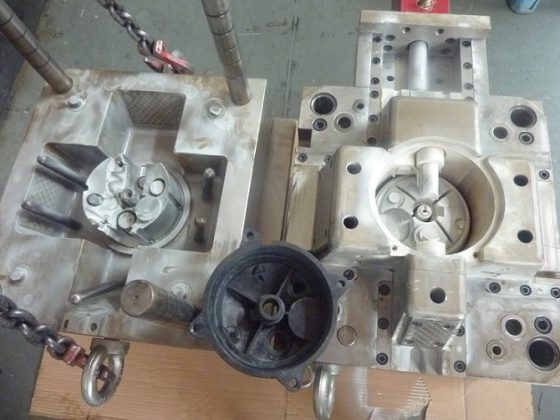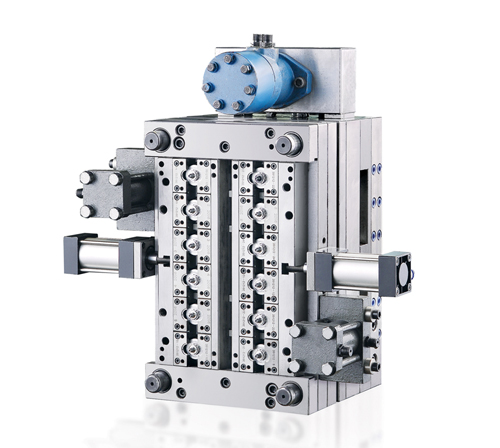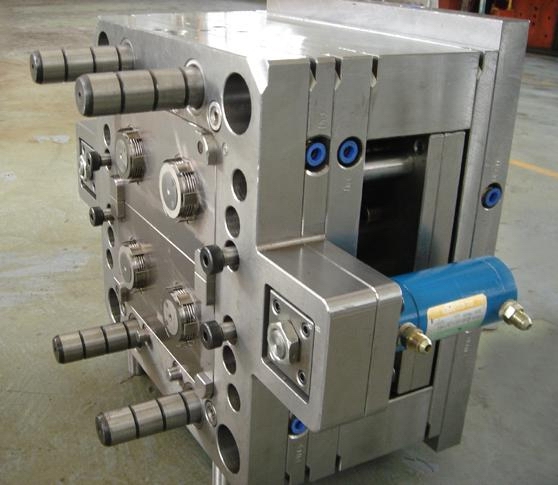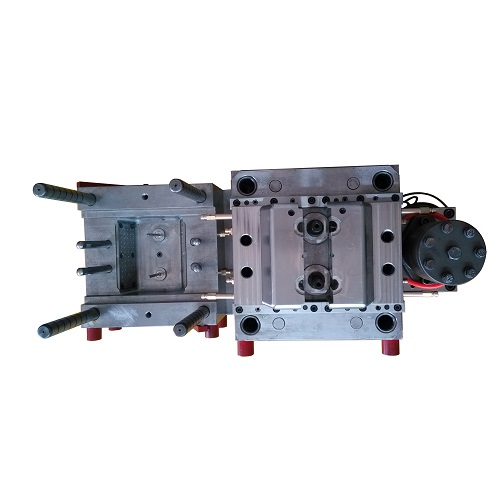One of the most unique types of injection molds is unscrewing mold.
Unscrewing molding is a unique injection molding process with mold technology that includes movement and rotation to produce threaded components. Some plastic unscrewing mold parts such as caps and closures with detailed threads cannot be removed using standard knock-off methods. After they are molded, parts need to be carefully unscrewed from mold to avoid damaging the threads.
Injection molded parts that have internal threads need to be unscrewed. On prototype molds and short run molds, the threads can be unscrewed manually. This option adds cost to the final part price. In high production molds, this is not a feasible option due to the final part price.



How does unscrewing mold work?
Automatic unscrewing molds are used to speed the cycle time up dramatically. The cost of these injection molds are very expensive and are made for high production. Unscrewing action of these injection molds are accomplished with hydraulic or electric motors. Precision made cores have the threads ground on them. They also have bearings attached to them to keep them in position. Gears are also attached to the cores and they engage with a main drive gear which has a chain attached to it on one end and is also attached to the motor on the other end. When the mold is open, the motor starts to turn the main drive gear which turns the threaded cores. The part is held in place by the means of ribs or serrations which allows the part to automatically unscrew and eventually fall off the core.
In some injection molds, a rack and pinion is used to automatically unscrew the part. Collapsible cores are also used. These cores have segments contained in them and collapse allowing the part to fall off the threads.
Unscrewing Mold Applications
The unscrewing molds are part of everyday use, which may cause you to think that you won’t need to spend much time considering the required design. To demonstrate the wide use of this particular mold type, the following is a shortlist of the types of products that use unscrewing molds in the design.
- Bottle and milk caps
- Condition and shampoo lids
- Prescription medication bottles
- Medical supplies
- Sprinkler and showerheads
- Screws, nuts, and bolts
- Consumer Goods
- Automotive Parts
- Personal Care /Cosmetics

Unscrewing Molds from JBR Injection Molding Services
JBR Precision Industry Product Co., Ltd has been casting internal threads for 30 years. The tolerances of most of the threads we produce are required to be within .004/in. on the pitch diameter. One of the issues of holding the tight tolerances is the part shrinking in an out- of- round condition. This condition is usually caused by the part design. The wall stock around the threads must be kept even to eliminate the out of round condition.
The material used for the cores is critical. One of the most common problems with injection molding threads with automatic unscrewing cores is the scoring between the core and the bushing. A high heat condition adds to the chance of scoring. JBR Precision Industry Product Co., Ltd uses an oil impregnated grade of steel for the core and a high wear resistant metal for the bushing. Another area for concern is the alignment of the core and bearings. These components need to be bored and positioned with high precision or it will also cause scoring. It is also a good idea to make sure the injection mold making shop you choose to use to build your injection mold should have vast experience in building automatic unscrewing injection molds.
Check Unscrewing Mold Products Now
What factors need to be considered?
When you need one of these types of unscrewing plastic molds, there are several things you have to determine to make sure you get the right fit for your product and budget.
Volume
The volume of the product will probably determine many different aspects of the final product, including the thread count, the size of the part, and the type of material that will be used during production. While other factors are important, the design of the various unscrewing molds is more complex and costly than many of the other types of molds.
Ease of Removal
The ease by which an unscrewing mold should be removed from the final product is an important factor to consider in the design. Water bottles have only a few threads, sometimes only two or three because they need to be easy to remove. To ensure that the tops do not fall off easily, the threads are spaced out a bit more. An unscrewing mold on a medical device will likely need a lot of threads that are evenly spaced and very difficult to pull off of the device. The material required for these two vastly different uses is affected by how easily the part should be removed from the product.
The Threads
The number of threads is going to vary based on the final product. Water bottles do not require a high thread count because they are relatively light and should be easily removed. If the unscrewing mold is for a plastic part under the hood of a car, it needs to have a higher thread count to be more durable. The number of threads required plays a large role in the final cost of production, so it needs to be tested to ensure it meets the needs of the final product.
Materials of auto unscrewing molding services
Custom manufacturer of precision molded plastics including plastic molds. Materials include ABS, acetal, acrylic, nylon, polycarbonate, polyester, PBT, PET, PPO, PPS, polyurethane, SAN, thermoplastic elastomers, polyethylene & polypropylene. Parts are injection molded in clamping pressure from 45 tons to 600 tons & in weights up to 75 oz. with clamp position repeatability up to 20 microns, settable pressure up to 1 kgf/sq. cm & 50 milliseconds velocity. Secondary services including machining, drilling, tapping, turning, broaching, sonic welding & routing are available.
JBR provides a wide range of automatically Unscrewing plastic injection mold manufacturing service that will be using the half mold design, complicated lifter assembly or thread core rotating automatically.


